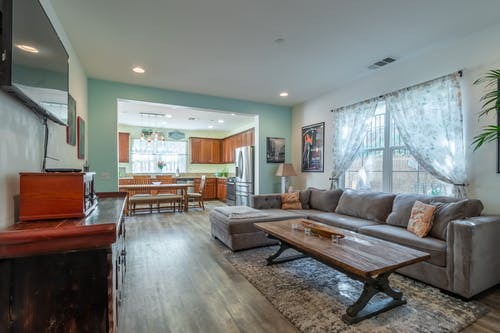Upgrading your windows and doors is not just about improving the aesthetics of your home; it’s about enhancing functionality, energy efficiency, and security. But with so many material options available, how do you make the right choice? Let’s break down everything you need to know to make an informed decision for your next home upgrade.
Understanding Your Options
Before going into specifics, it’s essential to have a solid understanding of the common materials used for windows and doors. Each comes with its list of pros and cons, affecting durability, maintenance, aesthetics, and more.
Windows Materials
-
Wood: Classic, insulating, and aesthetic, but requires maintenance.
-
Vinyl: Affordable, energy-efficient, low-maintenance, but less durable in extreme temperatures.
-
Fiberglass: Strong, efficient, and versatile but can be more expensive.
-
Aluminum: Durable and low maintenance but not the best insulator.
When focusing solely on windows, the decision-making process involves understanding each room’s specific needs and the expected overall performance. Energy efficiency, noise reduction, and UV protection are significant considerations. For detailed information on different materials and styles, visiting their website can offer an extensive resource, allowing you to explore options and consult experts about the best choice for your home.
Doors Materials
-
Wood: Warm, customizable, and firm but needs regular maintenance.
-
Fiberglass: Weather-resistant, energy-efficient, and can mimic wood grain.
-
Steel: Secure, cost-effective, and low-maintenance, but can dent and rust.
-
Glass: It brings in natural light for patio doors but less privacy and security.
On the other hand, doors serve as entry points and barriers. The material chosen can significantly impact your home’s security, energy efficiency, and aesthetic appeal. A patio door replacement for outdoor connections like patios can transform the space, enhancing both functionality and style. Choosing a suitable material, such as fiberglass for its durability and energy efficiency or glass to maximize natural light, can make a substantial difference in your living environment.
Factors to Consider When Choosing Materials
Selecting the suitable material goes beyond just the initial appearance. Here are factors you should consider:
-
Climate: Your climate can significantly influence the best material choice for durability and energy efficiency.
-
Maintenance: How much time and effort are you willing to invest?
-
Aesthetics: Your home’s overall design should guide your material choice to complement its style.
-
Budget: Material costs vary widely, as do long-term savings from energy efficiency and durability.
-
Security: The material’s strength can impact your home’s security level.
Evaluating Energy Efficiency
One of the primary reasons homeowners choose to upgrade their windows and doors is to improve energy efficiency. This choice can depend heavily on the material. For instance, wood and fiberglass provide excellent insulation but are more expensive than vinyl, which still offers decent energy efficiency. While durable and aesthetic, aluminum may only offer the best insulation if equipped with a thermal break. Thus, understanding the energy performance ratings of materials is critical to making a cost-effective and environmentally friendly choice.
Design and Aesthetic Considerations
It’s not just about function; the material you choose significantly impacts the visual appeal of your home. For a traditional look, wood is unparalleled, though fiberglass can closely mimic this appearance with less maintenance. Vinyl offers a wide range of color and style options, fitting various home aesthetics at an affordable cost. Aluminum frameworks work well for a modern, minimalistic look but may require internal or external finishes to match your home’s vibe.
Cost and Long-Term Investment
Your budget plays a crucial role in the decision-making process. However, it’s essential to consider the upfront costs and the long-term value. Materials like fiberglass and wood might have a higher initial cost but can offer better durability and energy efficiency, potentially saving money in the long run. Meanwhile, vinyl and aluminum can be more budget-friendly upfront with varying degrees of maintenance and lifespan.
Maintenance and Durability
Each material comes with its set of maintenance needs. Wood, while beautiful, requires regular sealing or painting to prevent rot and warping. Vinyl and fiberglass are low-maintenance options that still maintain their look over time. Aluminum is durable but may suffer in coastal areas due to salt corrosion. Considering the required upkeep can help you choose a material that fits your lifestyle and home’s needs.
Installation Matters
Installation is as crucial as the material chosen, as poor installation can negate the benefits of the chosen material. It’s essential to work with experienced professionals who understand the nuances of each material.
Including services such as window and door installation in St. Louis, companies specializing in this field bring the expertise and tools required for a job well done. Such expertise ensures that the windows and doors fit perfectly, are sealed correctly, and function as they should, providing optimal energy efficiency and security.
Final Thoughts
Choosing the materials for your windows and doors upgrade revolves around a detailed understanding of the options available and how they align with your needs. Factors like climate, maintenance, aesthetics, budget, and long-term value play crucial roles in this decision. By carefully considering each element and consulting with professionals, you can ensure your upgrade enhances your home’s functionality, energy efficiency, security, and overall aesthetic appeal.

